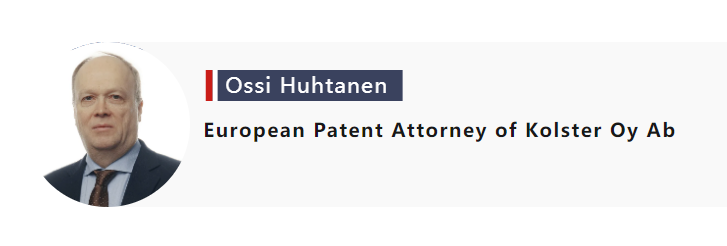
What should Chinese companies consider when expanding to Europe? The following article outlines important patenting tactics for successful market entry.
Patenting in Europe differs from patenting in China. Some aspects should be taken into account already before entering Europe. Also, during filing and prosecuting Europe has its own peculiarities. A reliable European partner helps to succeed in the European patenting process.
Consider Europe already during drafting
It is advisable to take European practice into account already when the priority Patent Application is drafted. The description must support the claimed invention. For example, the European Patent Office interprets very strictly how an embodiment is disclosed. During prosecution you are not allowed to combine features from different embodiments if the combination is not adequately disclosed.
For example, if your invention comprises features A and B and you disclose your first embodiment comprising features A and B and C and your second embodiment comprising features A and B and D you can claim the invention comprising features A and B. Also, you can claim the combination of features A and B and C and the combination of features A and B and D. However, if you have not disclosed an embodiment comprising features A and B and C and D you cannot during prosecution amend your claim to comprise such a combination if the combination is not disclosed in a further embodiment but features C and D are only disclosed in different embodiments.
The combination of features may also be presented in claims using multiple dependent claims in the application as filed. Thus, unlike in China, using multiple dependent claims is highly recommended in European practice. Please note that if you use the PCT-route, the European Application as filed is the PCT-Application as filed. Thus, the multiple dependent claims should already be in the PCT-Application as filed.
Filing the European Application
The Official Fees rise significantly when the number of claims increases. For example, for the 16th and each subsequent claim to the limit of 50 the rise is 265 Euros per each claim. For the 51st and each subsequent claim the rise is even higher. Before filing it is thus advisable to limit the number of claims not to at least significantly exceed 15.
Applicants outside of Europe must be represented by an Authorized Representative. A person who has the required education, experience and has passed the European Qualification Examination may be an Authorized Representative. An Authorized Representative may use the title European Patent Attorney.
Arguing inventiveness during prosecution
When assessing inventiveness the European Patent Office uses the so called Problem-Solution Approach. The Problem-Solution Approach consists of three stages:
1. Identifying the closest prior art.
2. Establishing the objective technical problem in view of the closest prior art. The objective technical problem is based on technical effects resulting from the distinguishing features of the claim compared to the closest prior art.
3. Starting from the closest prior art and the objective technical problem, considering whether the claimed invention would have been obvious to the skilled person at the relevant date.
lClosest prior art
The closest prior art is that which in one single reference discloses the combination of features which constitutes the most promising starting point for a development leading to the invention. In practice, the closest prior art is generally that which has the most relevant technical features in common with the invention and corresponds to a similar use. Another criteria for the closest prior art is the similarity of the problem to be solved.
lProblem
The problem must be a technical problem which the skilled person might have been asked to solve when the invention was made. The problem should not refer to matter which becomes aware of the claimed solution. The problem must be formulated sufficiently broadly that it does not contain pointers to the solution. Thus, the Examiner is not allowed to use hindsight knowledge of the invention when formulating the problem.
The problem need not be the same as the problem stated in the application as filed. New prior art, for example, may provoke the need to reformulate the problem. Any effect provided by the invention and derivable from the application as filed may be used as a basis for the reformulation. Therefore, it is important already during drafting the application to describe the advantages and effects of every feature described such that they can be used in the possible reformulation of the problem.
The application of the Problem-Solution Approach is very well established and developed in the course of the European Patent practice.
Oral Proceedings at the Examination stage
The Applicant is entitled to Oral Proceedings. Thus, the European Patent Office may not reject the application without arranging Oral Proceedings providing that the Oral Proceedings are requested. Requesting Oral Proceedings in a Response thus ensures that the Application is not rejected in written procedure.
An objective of the European Patent Office is to limit the number of Office Actions. Therefore, if the Application is not in order for acceptance, the European Patent Office quite soon after the beginning of the examination stage summons Oral proceedings. In the Oral proceedings the Applicant may for the last time argue in favour of the acceptance of the application. At the end of the Oral Proceedings the application is either rejected or accepted.
However, according to our experience we highly recommend that if a summons to attend Oral Proceedings is issued, it is advisable to rather quickly contact the Examiner in charge and present amendments and/or arguments. Thereby, dialogue with the Examiner is achieved and it is possible to get the Application accepted without the need of Oral Proceedings.









